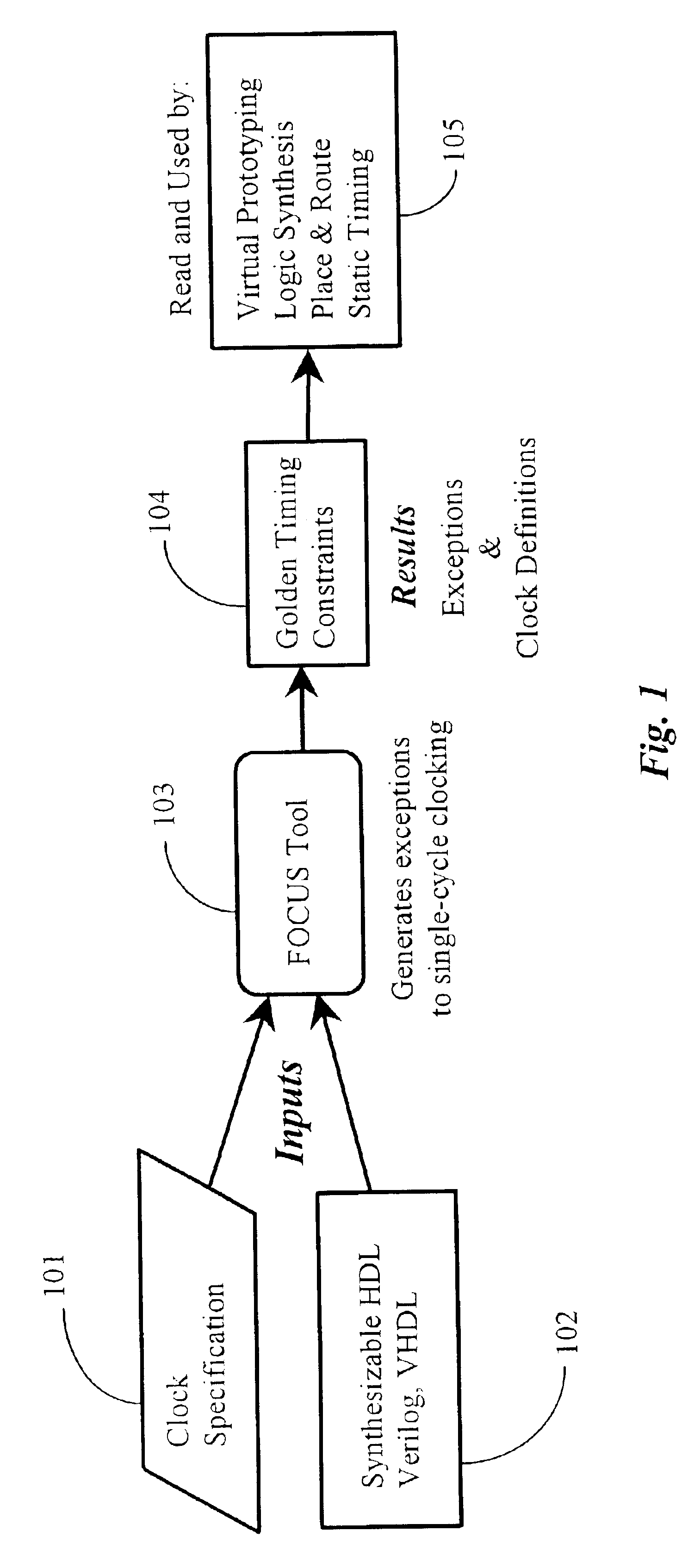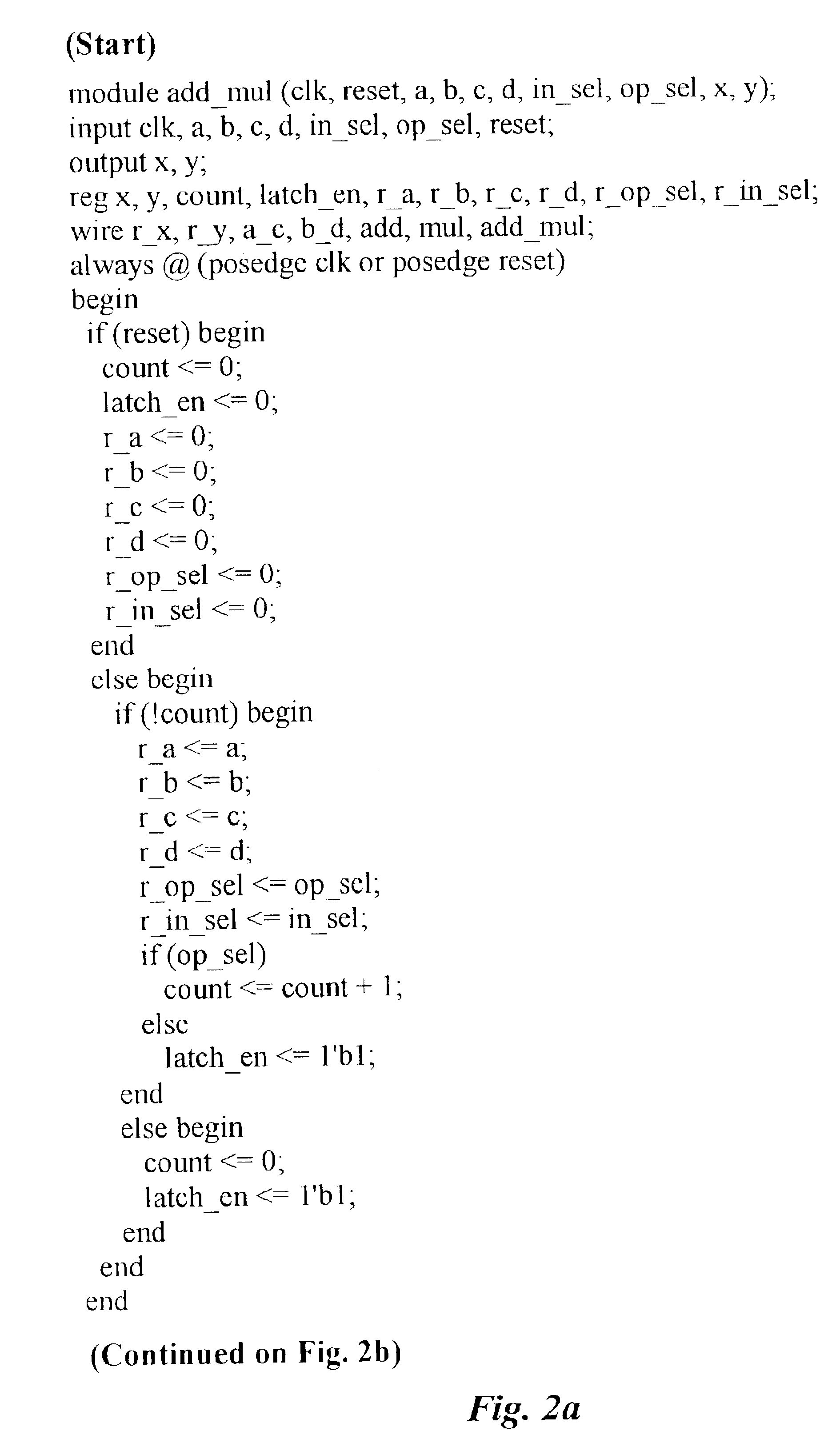Automated approach to constraint generation in IC design
a constraint generation and automatic approach technology, applied in the field of integrated circuit (ic) design, can solve the problems of new challenges in ic design, schedule slippage, additional r&d costs, etc., and achieve the effects of reducing the risk of design iterations, reducing the risk of design failure, and realistic block timing budgets
- Summary
- Abstract
- Description
- Claims
- Application Information
AI Technical Summary
Benefits of technology
Problems solved by technology
Method used
Image
Examples
Embodiment Construction
The system of the present invention, in a preferred embodiment, is a software-enabled system that automatically (i.e. without user-specified stimulus), analyzes a cycle-accurate description of interaction among functional blocks on a proposed IC, to generate timing constraints that must be satisfied by the IC to meet design requirements.
It is well-known that there are, broadly speaking, two historically distinct stages in the creation of a new IC: (1) the design stage, and (2) the implementation stage. The system of the invention, termed Focus by the inventors, links the two stages for the first time by establishing constraints imposed on the implementation stage by facts and characteristics of the design stage.
It is well-known that development engineers constrain the delays on the timing paths of a proposed IC based on the speed at which they intend to clock the IC. The engineers specify the clocks on their design and every timing path on the IC is required to have a delay less tha...
PUM
 Login to View More
Login to View More Abstract
Description
Claims
Application Information
 Login to View More
Login to View More - R&D
- Intellectual Property
- Life Sciences
- Materials
- Tech Scout
- Unparalleled Data Quality
- Higher Quality Content
- 60% Fewer Hallucinations
Browse by: Latest US Patents, China's latest patents, Technical Efficacy Thesaurus, Application Domain, Technology Topic, Popular Technical Reports.
© 2025 PatSnap. All rights reserved.Legal|Privacy policy|Modern Slavery Act Transparency Statement|Sitemap|About US| Contact US: help@patsnap.com



